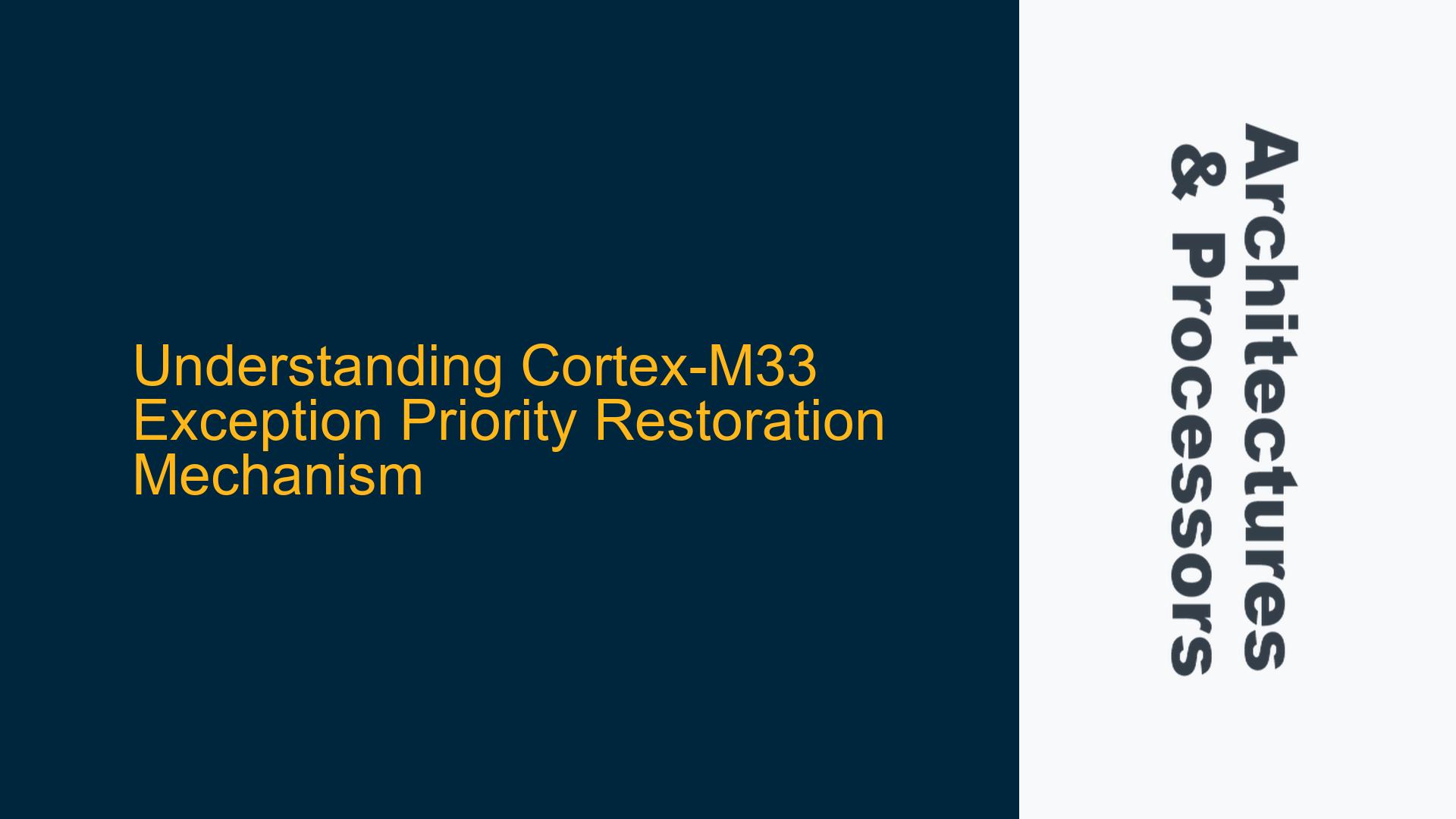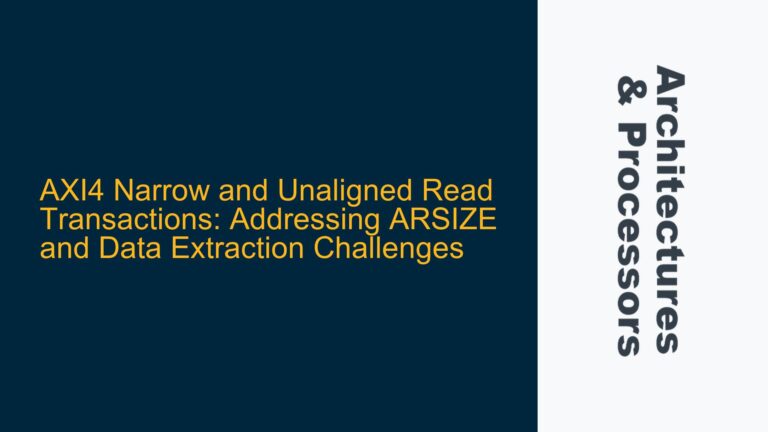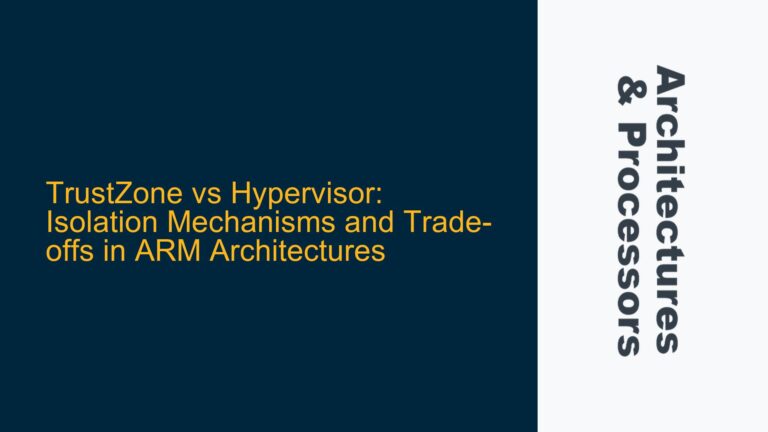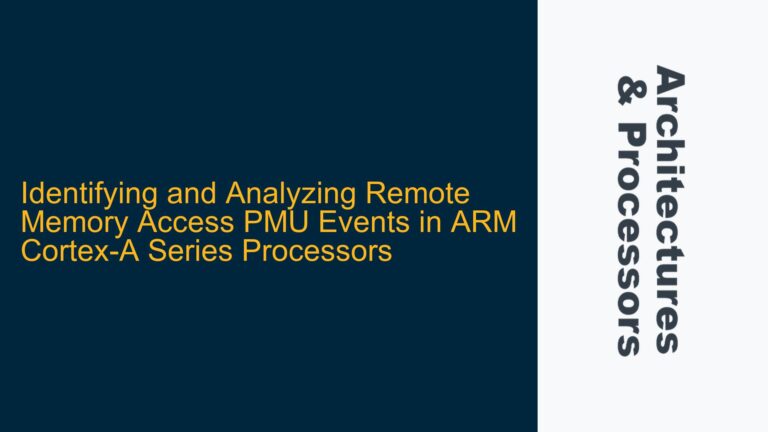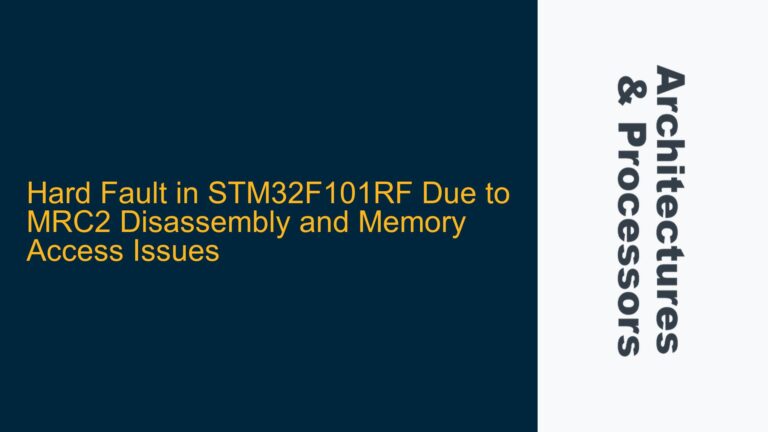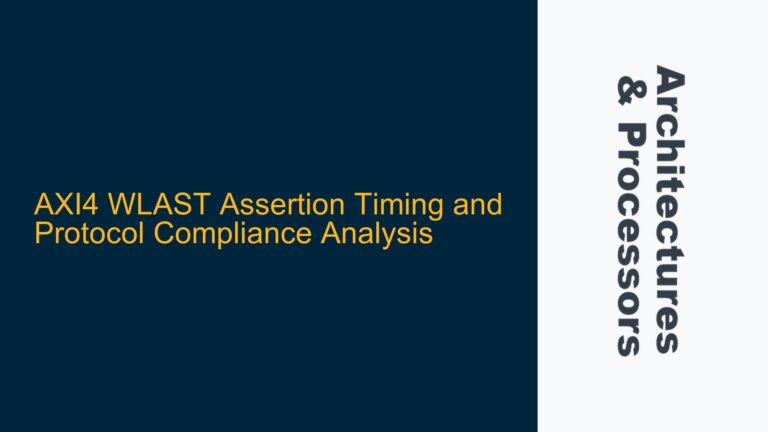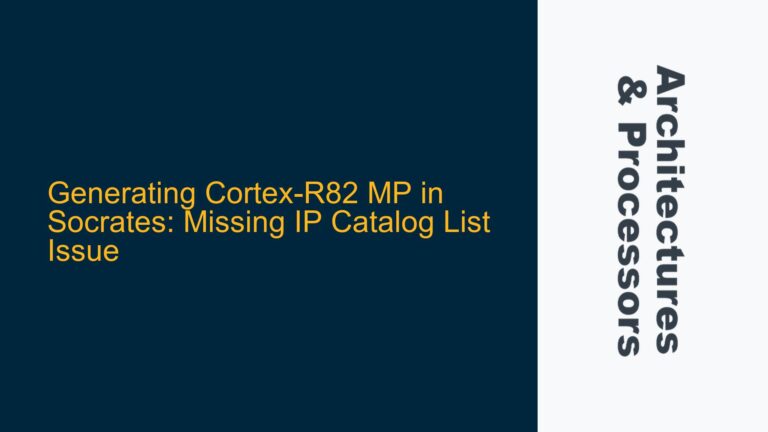Cortex-M33 Exception Priority Handling During Nested Interrupts
The Cortex-M33 processor, like other ARM Cortex-M series processors, employs a sophisticated exception handling mechanism that ensures correct prioritization and restoration of execution contexts during nested interrupts. This mechanism is critical for maintaining system stability and ensuring that higher-priority interrupts preempt lower-priority ones without losing track of the original execution state. The core of this functionality lies in the processor’s ability to save and restore the execution priority level when transitioning between different exception handlers.
When an exception occurs, the Cortex-M33 saves the current execution context, including the Program Status Register (xPSR), which contains the "Current Exception Number." This number is crucial because it indirectly determines the priority level of the exception being handled. During nested interrupts, the processor must remember the priority level of the preempted exception to restore it correctly after the higher-priority exception completes. This process is managed through a combination of hardware and software mechanisms, including the use of the stack and the EXC_RETURN value stored in the Link Register (LR).
The xPSR register plays a pivotal role in this process. It not only holds the Current Exception Number but also other critical state information, such as the condition flags and the execution mode (Thread or Handler). When an exception is taken, the processor automatically saves the xPSR, along with other registers, onto the stack. Upon returning from the exception, the processor restores the xPSR, which allows it to determine the correct priority level to resume.
Role of xPSR and EXC_RETURN in Priority Restoration
The xPSR (Exception Program Status Register) is a special-purpose register in the Cortex-M33 that contains the Current Exception Number, among other status bits. This number corresponds to the exception being handled and is used by the processor to determine the priority level of the current execution context. When a new exception occurs, the processor saves the xPSR onto the stack as part of the exception entry sequence. This ensures that the priority level of the preempted exception is preserved.
The EXC_RETURN value, stored in the Link Register (LR) during exception handling, is another critical component of the priority restoration mechanism. This value encodes information about the state to which the processor should return after completing the exception handler. Specifically, it indicates whether the processor should return to Thread mode or Handler mode and which stack pointer (Main Stack Pointer or Process Stack Pointer) should be used. Additionally, the EXC_RETURN value indirectly influences the restoration of the execution priority level by ensuring that the correct context, including the xPSR, is restored from the stack.
When a higher-priority exception preempts a lower-priority one, the processor saves the context of the lower-priority exception, including its xPSR, onto the stack. The EXC_RETURN value is then set to reflect the state of the preempted exception. Upon returning from the higher-priority exception, the processor uses the EXC_RETURN value to restore the context of the lower-priority exception, including its xPSR. The restored xPSR contains the Current Exception Number, which allows the processor to determine the correct priority level for the resumed exception.
This mechanism ensures that the Cortex-M33 can handle nested interrupts correctly, maintaining the integrity of the execution context and priority levels throughout the process. The combination of the xPSR and EXC_RETURN provides a robust framework for managing exception priorities, even in complex scenarios with multiple levels of nested interrupts.
Detailed Steps for Exception Priority Restoration in Cortex-M33
To fully understand how the Cortex-M33 restores exception priorities during nested interrupts, it is essential to break down the process into detailed steps. These steps highlight the interactions between the xPSR, EXC_RETURN, and the stack, as well as the role of the processor’s exception handling hardware.
-
Exception Entry and Context Saving: When an exception occurs, the Cortex-M33 begins by saving the current execution context onto the stack. This context includes the xPSR, which contains the Current Exception Number, as well as other registers such as the Program Counter (PC) and the General-Purpose Registers (R0-R3, R12). The processor also switches to Handler mode if it was in Thread mode and updates the Link Register (LR) with the EXC_RETURN value, which encodes the return state.
-
Priority Level Update: After saving the context, the processor updates its execution priority level to match the priority of the new exception. This is done by writing the priority level to the appropriate interrupt priority register (e.g., the NVIC’s IPR registers). The processor then begins executing the exception handler associated with the new exception.
-
Nested Exception Handling: If a higher-priority exception occurs while the processor is handling the current exception, the process repeats. The processor saves the context of the current exception, including its xPSR, onto the stack and updates the LR with a new EXC_RETURN value. The execution priority level is again updated to reflect the priority of the new exception.
-
Exception Return and Context Restoration: When an exception handler completes, the processor uses the EXC_RETURN value in the LR to determine how to restore the previous execution context. The processor pops the saved context from the stack, including the xPSR, which contains the Current Exception Number of the preempted exception. The restored xPSR allows the processor to determine the correct priority level for the resumed exception.
-
Priority Level Restoration: As part of the context restoration process, the processor updates its execution priority level to match the priority of the resumed exception. This ensures that the processor continues executing at the correct priority level, maintaining the integrity of the nested interrupt handling mechanism.
-
Return to Preempted Exception: Finally, the processor resumes execution of the preempted exception handler, using the restored context and priority level. This process continues until all nested exceptions have been handled and the processor returns to its original execution state, either in Thread mode or Handler mode, depending on the initial context.
By following these steps, the Cortex-M33 ensures that exception priorities are correctly managed during nested interrupts, providing a robust and reliable mechanism for handling complex interrupt scenarios. The use of the xPSR and EXC_RETURN, combined with the processor’s hardware-based context saving and restoration, allows the Cortex-M33 to maintain the correct execution state and priority levels throughout the exception handling process.
Practical Considerations and Debugging Tips for Exception Priority Handling
While the Cortex-M33’s exception priority handling mechanism is highly reliable, there are several practical considerations and potential pitfalls that developers should be aware of when working with nested interrupts. Understanding these considerations can help prevent common issues and simplify debugging efforts.
-
Stack Management: Proper stack management is critical for ensuring that the processor can save and restore exception contexts correctly. If the stack is corrupted or insufficiently sized, the processor may fail to save or restore the xPSR and other critical registers, leading to incorrect priority restoration or system crashes. Developers should ensure that the stack is appropriately sized and that stack usage is carefully monitored, especially in systems with deep levels of nested interrupts.
-
EXC_RETURN Value Manipulation: The EXC_RETURN value in the LR is automatically managed by the processor during exception entry and exit. However, incorrect manipulation of this value, either through software bugs or improper use of assembly instructions, can lead to incorrect context restoration. Developers should avoid manually modifying the LR during exception handling and should ensure that any custom exception handling code adheres to the processor’s exception handling conventions.
-
Priority Configuration: The Cortex-M33 allows developers to configure the priority levels of exceptions through the NVIC’s interrupt priority registers. Incorrect priority configuration can lead to unexpected behavior, such as lower-priority exceptions preempting higher-priority ones or exceptions not being handled in the correct order. Developers should carefully configure exception priorities according to the system’s requirements and should regularly review the priority settings during debugging.
-
Debugging Tools: ARM provides a range of debugging tools, such as the Cortex-M33’s Embedded Trace Macrocell (ETM) and Instrumentation Trace Macrocell (ITM), which can be used to monitor exception handling and priority restoration in real-time. These tools can provide valuable insights into the processor’s behavior during nested interrupts and can help identify issues such as incorrect priority restoration or stack corruption. Developers should familiarize themselves with these tools and use them to aid in debugging complex interrupt scenarios.
-
Exception Handler Design: The design of exception handlers can significantly impact the processor’s ability to handle nested interrupts correctly. Exception handlers should be designed to minimize execution time and should avoid blocking operations that could delay the handling of higher-priority exceptions. Additionally, exception handlers should be carefully tested to ensure that they correctly save and restore the processor state, including the xPSR and other critical registers.
By keeping these practical considerations in mind and following best practices for exception handling, developers can ensure that the Cortex-M33’s exception priority handling mechanism operates correctly and reliably, even in complex systems with multiple levels of nested interrupts. Proper stack management, careful configuration of exception priorities, and the use of debugging tools can all contribute to a robust and stable interrupt handling system.
